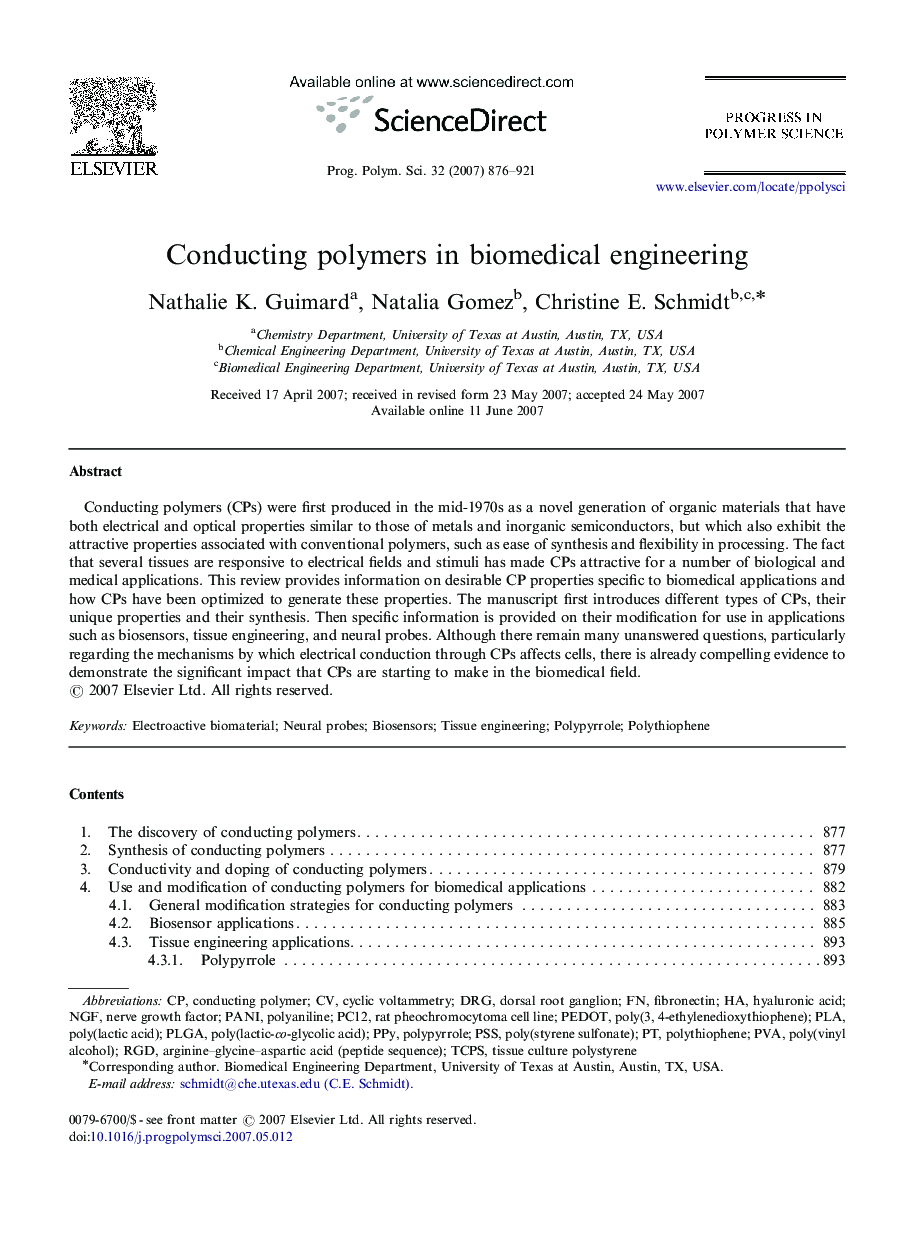| Article ID | Journal | Published Year | Pages | File Type |
|---|---|---|---|---|
| 5209010 | Progress in Polymer Science | 2007 | 46 Pages |
Abstract
Conducting polymers (CPs) were first produced in the mid-1970s as a novel generation of organic materials that have both electrical and optical properties similar to those of metals and inorganic semiconductors, but which also exhibit the attractive properties associated with conventional polymers, such as ease of synthesis and flexibility in processing. The fact that several tissues are responsive to electrical fields and stimuli has made CPs attractive for a number of biological and medical applications. This review provides information on desirable CP properties specific to biomedical applications and how CPs have been optimized to generate these properties. The manuscript first introduces different types of CPs, their unique properties and their synthesis. Then specific information is provided on their modification for use in applications such as biosensors, tissue engineering, and neural probes. Although there remain many unanswered questions, particularly regarding the mechanisms by which electrical conduction through CPs affects cells, there is already compelling evidence to demonstrate the significant impact that CPs are starting to make in the biomedical field.
Keywords
PLGA4-ethylenedioxythiophene)TCPSPC12NGFRGDPLAPPyPSSPolypyrrolePVAPEDOTDRGdorsal root ganglionPANIHyaluronic acidBiosensorsrat pheochromocytoma cell linenerve growth factorFibronectinTissue engineeringCyclic voltammetryNeural probespoly(lactic-co-glycolic acid)Poly(lactic acid)PolyanilinepolythiophenePoly(styrene sulfonate)Tissue culture polystyrenePoly(vinyl alcohol)Conducting polymer
Related Topics
Physical Sciences and Engineering
Chemistry
Organic Chemistry
Authors
Nathalie K. Guimard, Natalia Gomez, Christine E. Schmidt,
